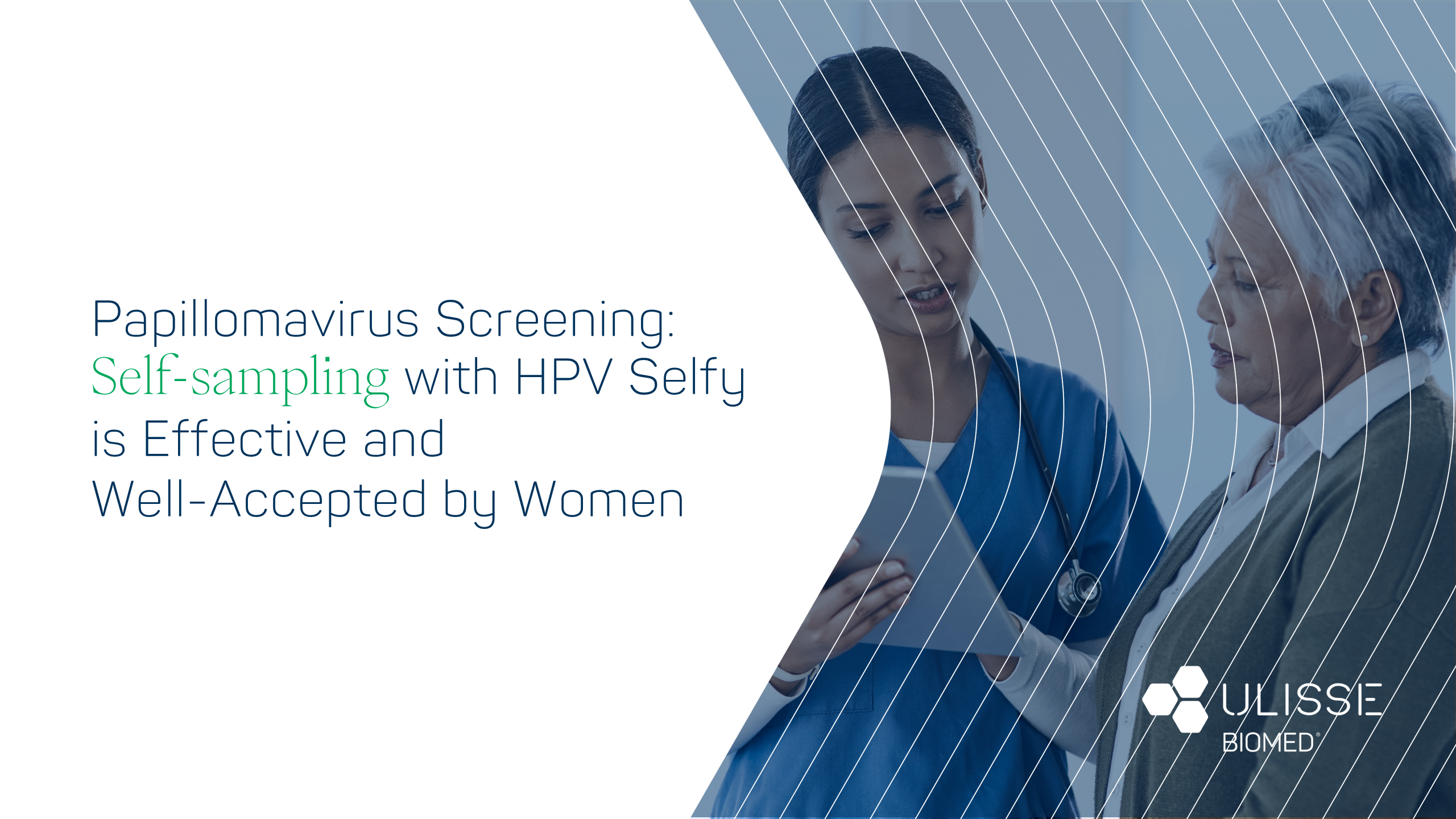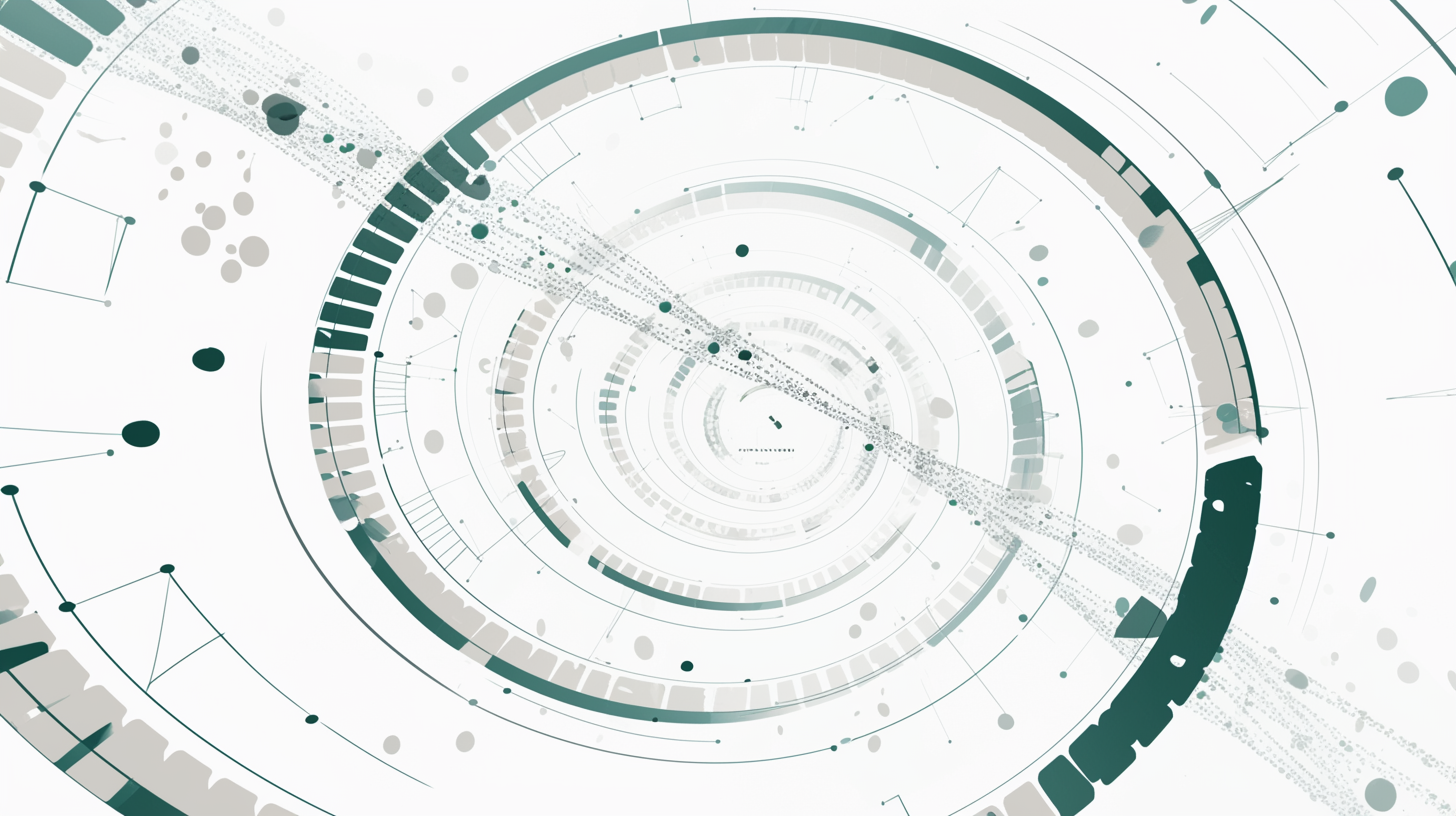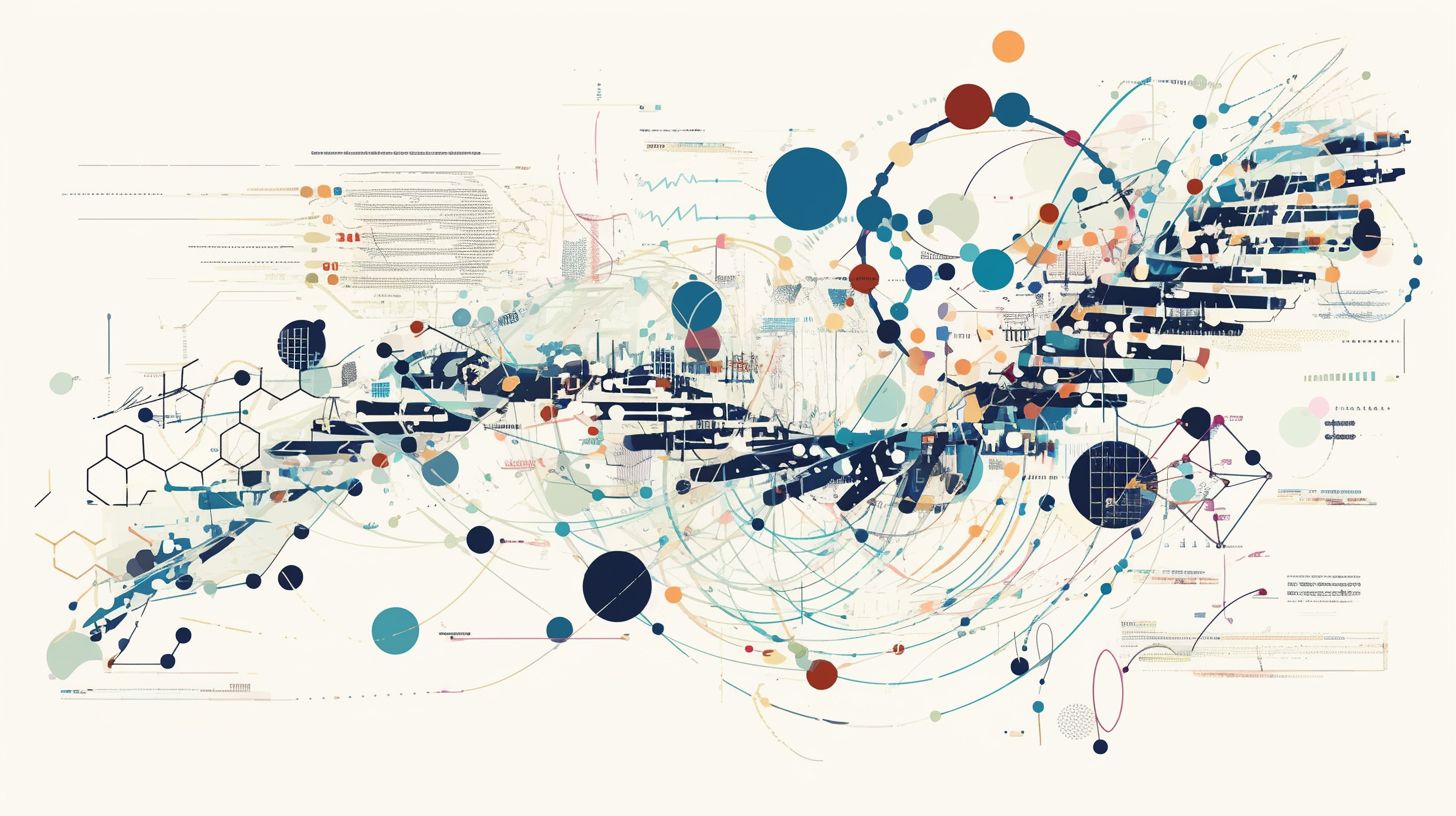Reading time [minutes]: 9
Market and Sector Trends
Decentralised Diagnostics: Growth and Future of the Market
From the point-of-care testing revolution to the convergence of devices, cloud services and AI: overview of the evolution of decentralised diagnostics, global market trends and prospects towards 2030.
Abstract
Decentralised diagnostics represents one of the most profound transformations in modern medicine. From point-of-care testing to portable PCR, via DaaS business models and cloud-native architectures, this article analyses the market dynamics, regulatory developments, clinical and operational implications. It includes growth projections, international cases, strategic quotes from the Ulisse Biomed team and a clear vision towards AI-driven, distributed and predictive diagnostics.
- Snapshot
- Introduction
- 1. Expanding market: global numbers and focus on distributedPCR
- 2. From device to service: innovative and scalable business models
- 3. Clinical and operational impact: TAT reduction, new use cases and active surveillance
- 4. Regulatory developments: regulators on the move between facilitation and rigour
- 5. Investment dynamics: venture capital, M&A and ESG focus
- 6. Beyond 2030: towards 'full-stack', real-time and AI-driven diagnostics
Snapshot
- Decentralised diagnostics
Model of medical diagnosis in which tests are performed outside centralised laboratories, e.g. directly on the territory (outpatient clinics, pharmacies, homes), bringing the analysis closer to the patient to reduce time and logistics. - Point-of-Care (POC)
A diagnostic testing modality that allows analysis to be performed directly at the point of care - outpatient clinics, hospital wards, clinic pharmacies, out-of-hospital settings - guaranteeing rapid and reliable results without resorting to the central laboratory. It enables immediate clinical decisions and streamlined workflows, representing the core of professional decentralised diagnostics. - PCR (Polymerase Chain Reaction)
Molecular technique to amplify DNA/RNA fragments, considered the gold standard for the diagnosis of many infections; in its portable version (POC PCR) it allows molecular analysis in the field with laboratory accuracy. - TAT (Turnaround Time)
Test cycle time, i.e. the time from sample collection to availability of the diagnostic result. In decentralised diagnostics, the TAT is reduced from days to minutes/hours. - CLIA Waiver
In the US, certification classifies a test as 'low complexity', exempting it from certain regulatory requirements (CLIA) and allowing it to be performed even in non-laboratory settings by non-specialist personnel. - IVDR
In Vitro Diagnostic Regulation, the new EU regulation (2017/746) in force from 2022 that raises regulatory standards for in vitro diagnostic devices (clinical validation, quality control, post-marketing surveillance), replacing the previous IVDD. - Diagnostics-as-a-Service (DaaS)
SaaS (Software-as-a-Service) inspired business model in which diagnostics is offered as an integrated service (testing platforms + consumables + cloud analysis) through subscriptions or recurring contracts, instead of simply selling devices.
Introduction
Medical diagnostics is undergoing a radical transformation, moving from a centralised model - based on large hospital laboratories - to a decentralised paradigm spread across the territory. Thanks to technological advances (miniaturised instrumentation, advanced sensor technology, cloud connectivity) and lessons learnt during the COVID-19 pandemic, diagnostic tests are increasingly reaching patients wherever they are. From new small distributed labs enabled for rapid testing to portable molecular biology devices in rural clinics, the goal is twofold: to accelerate clinical response times and expand access to diagnosis in previously excluded settings. The result is a booming sector, with double-digit growth rates and the emergence of new operating and business models. According to estimates, the global market for decentralised diagnostics (including all point-of-care solutions) is already worth tens of billions of dollars and continues to expand. In particular, molecular point-of-care diagnostics - which includes rapid PCR-based tests performed directly at the point of care - represents the most dynamic frontier. Its weight, relatively small compared to the total diagnostic market, is increasing rapidly: the global value of molecular POC tests is expected to grow from about USD 3.7 billion in 2023 to USD 8.8 billion in 2030, with a CAGR of between 11% and 12% [1]. This growth clearly outpaces the average growth of the point-of-care market as a whole (estimated at around 5-8% per year depending on the source) [2], a sign that advanced technologies such as portable PCR are driving the industry's expansion. The trend reflects a change in approach: more and more diagnoses are being performed close to the patient, reducing waiting times and improving clinical outcomes - a need highlighted by the COVID-19 pandemic, during which rapid field tests became essential public health tools [3].
1. Expanding market: global numbers and focus on distributedPCR
The global market for decentralised diagnostics is experiencing significant expansion, fuelled by the need for rapid on-the-ground testing and technological innovation. According to Grand View Research, the global point-of-care (POC) devices and services market is expected to reach approximately $68.5 billion by 2030, up from $47.8 billion in 2024, with an average CAGR of 5-6% [1]. This growth is driven by an ageing population and expanding healthcare access in many areas, particularly in emerging countries. Decentralised molecular diagnostics represents the most innovative segment. The availability of portable instruments capable of performing sophisticated tests - such as real-time PCR - directly even in remote areas or out-of-hospital settings is enabling new applications. According to GlobeNewswire, the global POC molecular testing market was valued at around $3.7 billion in 2023 and is projected to reach $8.8 billion by 2030, with a CAGR of 11.4% [2].
The PCR POC test sub-segment is expected to grow at an annual rate of more than 12%, reaching approximately USD 5.7 billion over the same period [2]. These numbers confirm the leadership of PCR technology in the molecular market, especially for infectious diseases. During the pandemic, portable, high-sensitivity solutions made accurate diagnostics possible in a matter of minutes, even in remote or infrastructure-poor settings. This approach has been consolidated beyond the emergency, proving to be strategic for public health. Geographically, the US and Europe represent the most developed markets, with strong integration of rapid tests in the territory. In the US, the molecular POC market was estimated at USD 1.5 billion in 2023 [2]. In Asia-Pacific, the fastest growth can be observed: in China, the CAGR exceeds 13%, supported by public investment in distributed healthcare [2].
Latin America and Africa are also increasing the adoption of POC tests to reduce inequalities in access to diagnosis. For many companies in the industry, this scenario represents a strategic opportunity. The scale potential of distributed molecular diagnostics attracts investors and stimulates new business models. As observed by many analysts, competition in this field is intensifying: biotech start-ups obtain substantial funding, while large players consolidate their portfolios through targeted acquisitions. As underlined by Nicola Basile, CEO of Ulisse Biomed: 'The growth trend in decentralised diagnostics is not only quantitative, but qualitative. It changes the way we generate value: no longer just devices, but integrated platforms, data and continuous service."
2. From device to service: innovative and scalable business models
In addition to quantitative expansion, decentralised diagnostics is evolving towards qualitatively new business models. Instead of the traditional one-off sale of devices, continuous service logics are emerging, inspired by SaaS models. The concept of Diagnostics-as-a-Service (DaaS) is redefining the entire ecosystem: the device becomes part of an integrated offer that includes cloud platforms, proprietary consumables, software updates and support services. In this context, suppliers can count on recurring revenues, increased customer loyalty and the possibility of monetising the data generated as well.
For laboratories or diagnostic centres, on the other hand, the advantage is access to advanced technologies without high upfront investments, thanks to subscription or pay-per-test formulas. One of the pillars of the DaaS model is precisely the monetisation of the cloud.
Modern POC devices are often connected in real time to cloud platforms that allow automatic data storage, remote performance monitoring and integration with medical records. This paves the way for value-added services such as epidemiological dashboards, decision support tools and software upgrades that add new diagnostic panels without modifying existing hardware.
At the operational level, this model overturns traditional logic: value no longer resides in the isolated diagnostic act, but in the overall cycle of use. Reagents and consumables (such as test cartridges) generate continuous revenue streams, often accounting for 55-65% of the life-cycle value of a portable PCR system [3]. In parallel, software modules for advanced data analysis and remote management of the instrument fleet are spreading: from middleware for integration with LIS/EMR to predictive systems for maintenance. As highlighted by Nicola Basile, CEO of Ulisse Biomed: 'In the new diagnostics, you no longer just sell a machine. You offer a complete, scalable system that grows with use and creates value every day."
This approach is also particularly appreciated by investors, who see DaaS as a scalable, recurring-margin model suitable for rapid expansion. Not surprisingly, many start-ups in the sector are evaluated precisely on their ability to implement these models on an industrial scale.
3. Clinical and operational impact: TAT reduction, new use cases and active surveillance
The widespread adoption of decentralised diagnostics brings about substantial changes in clinical flows, with immediate benefits in terms of efficiency and patient outcomes. One of the most remarkable aspects is the drastic reduction in Turnaround Time (TAT): tests that in a traditional pathway would take hours or days can now be completed in minutes directly on the ground. In the emergency room, a point-of-care molecular respiratory panel is able to provide accurate identification of the infectious agent in about an hour, compared to 48+ hours with classical methods [4]. Some new generation POC systems, designed for use in critical settings, promise response times of as little as 15 minutes. This enables timely and targeted therapeutic decisions, avoiding precautionary admissions and improving antibiotic stewardship. The impact also extends to territorial medicine. Rapid tests in the pharmacy or GP's office enable more autonomous and effective management of patients, reducing the need for specialist examinations and improving compliance. A prime example is the use of point-of-care CRP to distinguish bacterial from viral infections and reduce inappropriate antibiotic prescriptions. Decentralised diagnostics also opens up new possibilities in remote or resource-limited settings.
In Australia, for example, a national programme has been launched using portable PCR devices to test for HIV, SARS-CoV-2 and other infections in over 100 remote indigenous communities, improving access to care and epidemiological surveillance. Similar experiences can be found in Asia and Latin America, where public initiatives and partnerships with NGOs bring mobile diagnostics to remote areas, including through mobile clinics and travelling campaigns. In terms of public health, the deployment of connected POCs enables the automatic collection of real-time diagnostic data, useful for building regional and national epidemiological dashboards. This active surveillance system can detect early signs of outbreaks or abnormal trends, enhancing the health system's ability to respond.
As Stefano Lo Priore, President of Ulisse Biomed, says: "With decentralised diagnostics we are creating a digital nervous system of healthcare: every test is a sensor, every patient is part of a learning network." This systemic perspective reinforces the vision of diagnostics that are not only faster and more accessible, but also integrated into public health governance.
4. Regulatory developments: regulators on the move between facilitation and rigour
Accelerating diagnostic innovation has prompted global regulatory authorities to update regulations and authorisation pathways to keep pace with decentralisation. The landscape remains uneven across geographies, but common trends are emerging. In the US, the FDA classifies devices according to risk and allows simplified pathways (e.g. 510(k) exempt) for low-complexity tests. Many point-of-care tests also require CLIA Waiver, which enables their use outside the laboratory, even by non-specialist personnel [6]. In recent years, the FDA has provided clearer guidelines for obtaining these exemptions, speeding up the market entry of portable and easy-to-use diagnostic solutions. A significant example is the dual-approved rapid molecular tests (510(k) + CLIA waiver), which allow PCR-type tests to be performed in decentralised settings such as pharmacies, outpatient clinics and mobile facilities. The experience of the pandemic has pushed further towards more streamlined authorisation processes for tests considered a public health priority. In Europe, the entry into force of the In Vitro Diagnostic Regulation (IVDR) has raised certification standards for diagnostic devices. The new framework includes more stringent requirements in terms of clinical validation, traceability, post-market surveillance and risk classification. Globally, regions such as Asia-Pacific and Latin America are also updating their regulatory frameworks to foster the adoption of point-of-care solutions. Some countries are implementing fast-track pathways for essential tests (HIV, influenza, dengue), especially in rural areas. In parallel, organisations such as WHO are promoting pre-qualification mechanisms for POC tests, facilitating their uptake in low- and middle-income countries. For innovative companies, monitoring these developments is crucial.
As Nicola Basile, CEO of Ulisse Biomed, recalls: "An evolved and predictable regulatory ecosystem is the necessary condition to get innovative diagnostics really everywhere." In this dynamic scenario, the ability to align with regulatory requirements in a timely manner becomes a competitive advantage, especially for those aiming for global deployment of their solutions.
5. Investment dynamics: venture capital, M&A and ESG focus
The decentralised diagnostics revolution has attracted increasing interest from institutional and strategic investors. In recent years, the segment has seen a surge of financing and acquisition deals, confirming it as one of the most dynamic clusters in medtech. Venture capital has played a central role. In the wake of the pandemic and the growing focus on distributed healthcare, numerous start-ups focused on point-of-care solutions have closed significant funding rounds.
Investors reward scalable business models (e.g. DaaS), proprietary technologies with defensible barriers and global vision. In parallel, Corporate Venture Capital from large IVD groups, which are interested in portable technologies, AI integration and cloud-native solutions, has strengthened. The M&A landscape also saw targeted strategic transactions: acquisitions aimed at closing technology gaps, consolidating positions in high-growth segments and expanding geographical presence. Companies with innovative assets and commercial traction become attractive targets, especially if they have solid IP and recurring revenue models. An emerging trend concerns the growing interest of ESG funds and impact investors. Decentralised diagnostics are perceived as a lever to improve equity in access to care and, in some cases, to reduce the environmental footprint through simplified logistics and sustainable consumables. Projects that integrate ESG logic - such as the use of recyclable materials, reduction of transport emissions or diagnostic programmes for disadvantaged communities - attract mission-driven capital and public-private partnerships.
As Stefano Lo Priore, President of Ulisse Biomed, points out: 'Capital follows vision. And today the vision is clear: to make molecular diagnostics accessible, connected and sustainable."
For Ulysses Biomed, this trajectory represents a dual opportunity: to attract investors aligned with its industrial and strategic values, and to consolidate its role as a key technological player in a changing ecosystem.
6. Beyond 2030: towards 'full-stack', real-time and AI-driven diagnostics
Looking beyond the 2030 horizon, decentralised diagnostics is increasingly shaping up as a distributed, intelligent and predictive infrastructure. Current technology trajectories foreshadow an evolution towards full-stack diagnostic platforms, capable of integrating multi-parameter analysis, decision support and real-time connectivity in even peripheral contexts. In the emerging model, the entire diagnostic process - from sample collection to interpretation of results - will be manageable on-site. Already today, miniaturised portable systems combine PCR reactions, integrated reading and cloud connectivity. Within the next decade, these solutions will further evolve thanks to advances in microfluidics, lab-on-chip and high-sensitivity digital sensors. In parallel, the AI-driven component will become increasingly pervasive. Artificial intelligence algorithms will be integrated into diagnostic devices to optimise the interpretation of results, suggest differential diagnoses or stratify clinical risk.
In combination with wearables, mobile apps and self-reported symptoms, AI will help build digital patient twins: dynamic profiles that support prevention and personalised medicine. This connected infrastructure will constitute a true digital nervous system of public health, where every point-of-care test is an active sensing node. The data, anonymised and aggregated, will feed real-time epidemiological dashboards at national and international level. WHO and others are already experimenting with these models, which could become practice in 2030. As Stefano Lo Priore, President of Ulisse Biomed, says: 'The future of diagnostics is not only faster, but smarter and more distributed.
Every test performed in the field generates data that helps the entire healthcare system react better, sooner." This vision opens up new models of predictive medicine, proactive healthcare and public-private partnerships based on interoperable infrastructures. For Ulisse Biomed, the opportunity is twofold: to continue to innovate with proprietary technologies - device, cloud, AI - and to lead the cultural shift towards a paradigm in which diagnosis is not an isolated point but a continuous, distributed and data-driven process.

Sources and bibliography
- Grand View Research – Precision Diagnostics Market, Press Release (June 2024)grandviewresearch.comgrandviewresearch.com – (Trend post-pandemia verso diagnostica decentralizzata persistente).
- ResearchAndMarkets via GlobeNewswire – “Global Point-of-Care Molecular Diagnostics Market to Reach $8.8B by 2030” (April 2024)globenewswire.comglobenewswire.com – (Dati di mercato POC Molecolare, dimensione 2023 vs 2030, CAGR, focus PCR).
- Mordor Intelligence – PCR Molecular Diagnostics Market Analysis (2025–2030)mordorintelligence.commordorintelligence.com – (Business model: ricavi consumabili ~55%, cloud connectivity e domanda reagenti; innovazioni tech, case Australia remote).
- Orchard (Kim Futrell) – “5 Ways to Improve POCT ROI” (OrchardSoft blog, 2021)orchardsoft.comorchardsoft.com – (Esempi di ROI: HbA1c POC vs visite, riduzione utilizzo emoderivati; importanza data management e integrazione per popolazione).
- Reuters – “Roche acquires GenMark for $1.8B to challenge test rivals” (15 Mar 2021)reuters.comreuters.com – (M&A strategica: pannelli sindromici POC, mercato 2019 $800M->2024 $2B, CAGR ~20%).
- Reuters – Dichiarazione Thomas Schinecker, Rochereuters.com – (Vantaggi di scala acquisizione GenMark; focus su espansione in contesti ospedalieri decentralizzati).
- IQVIA Blog – “Decentralized Healthcare and POC Testing in LATAM” (2019)iqvia.comiqvia.com – (Iniziative in LATAM: health fairs, centri HIV decentralizzati; adozione test rapidi e partnership pubblico-private; barriere culturali).
- Grand View Research – Point-of-Care Diagnostics Industry Report, 2030grandviewresearch.comgrandviewresearch.com – (Valore mercato POC globale 2024 $47.8B, 2030 $68.5B, driver demografici; quota APAC in crescita 8%+; North America ~43% share 2024).
- CovarsaDx News – “Nuclein’s DASH PCR system receives FDA 510k clearance & CLIA waiver” (Jan 2025)covarsadx.comcovarsadx.com – (Esempio test POC multi-virus 15 min con approvazione FDA + waiver, abilita uso diffuso).
- BMC Primary Care – “Barriers of POC testing in resource-limited settings”bmcprimcare.biomedcentral.com – (Ostacoli implementazione POCT in contesti a basse risorse e strategie sostenibili).
- PubMed (NIH) – “Strategies for overcoming challenges for decentralised diagnostics”pubmed.ncbi.nlm.nih.gov – (Best practice per implementazione POC, versatilità tecnologie e backup laboratoristici).













